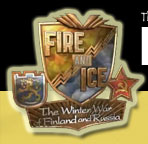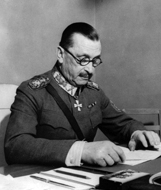

Treaty of Peace Between the Republic of Finland and the Union of Soviet Socialist Republics
March 12, 1940
The government of the Republic of Finland on the one hand and The Presidium of the Supreme Soviet of the Union of Soviet Socialist Republics on the other hand.
Desiring to put to an end the hostilities which have arisen between
the two countries and to create lasting peaceful relations between
them, and being convinced that the creation of precise conditions
for reciprocal security, including the security of the cities of Leningrad
and Murmansk and of the Murmansk Railway, corresponds to the interest
of both contracting parties.
Have to this end found it necessary to conclude a peace treaty and
have...agreed upon the following:
Article I
Hostilities between Finland and the USSR shall cease
immediately in accordance with procedure laid down
in protocol appended
to this treaty.
Article II
The national frontier between
the Republic of Finland and the USSR shall run along a new line in
such fashion
that there
shall be included in the territory of the USSR, the entire Karelian
Isthmus with the city of Viipuri and Viipuri Bay with its islands,
the western and northern shores of Lake Ladoga with the cities
of
Kexholm and Sortavala and the town of Suojarvi, a number of islands
in the Gulf Of Finland, the area east of Markajarvi with the town
of Kuolajarvi, and part of the Rybachi and Sredni peninsulas, all
in accordance with the map appended to this treaty.
A more detailed determination and establishment of the frontier line shall be carried out by a mixed commission made up of representatives of the contacting powers, which commission shall be named within ten days from the date of the signing of this treaty.
Article III
Both contracting parties
undertake to refrain from any attack upon the other and make no alliance
and to participate
in no coalition directed against either of the contracting parties.
Article IV
The Republic of Finland agrees
to lease to the Soviet Union for 30 years, against an annual rental
of eight
million
Finnish marks to be paid by the Soviet Union, Hanko Cape and the
waters surrounding it in a radius of five miles to the south and
east and
three miles to the north and west, and also the several islands falling
within that area, in accordance with the map appended to this treaty,
for the establishment of a naval base capable of defending the
mouth
of the Gulf of Finland against attack; in addition to which, for
the purpose of protecting the naval base, the Soviet Union is granted
the right of maintaining there at its own expense the necessary
number
of armed land and air forces.
Within ten days from the date this treaty enters into effect, the government of Finland shall withdraw all its military forces from Hanko Cape, which together with its adjoining islands shall be transferred to the jurisdiction of the USSR in accordance with this article of the treaty.
Article V
The USSR undertakes to withdraw
its troops for the Petsamo area which the Soviet state voluntarily
cede to
Finland
under the peace treaty of 1920.
Finland undertakes, as provided in the peace treaty of 1920, to refrain from maintain in the waters running along its coast of the Arctic Ocean warships and other armed ships, excluding armed ships of less than 100 tons displacement, which Finland shall be entitled to maintain without restriction, and also at most 15 warships or other armed ships, the displacement of none of which shall exceed four hundred tons.
Finland undertakes, as was provided in the same
treaty, not to maintain in the said waters any submarines or armed
aircraft.
Finland similarly undertakes , as was provided in the same treaty,
not to establish on that coast military ports, naval bases, or naval
repair shops of greater capacity than is necessary for the above-mentioned
ships and their armaments.
Article VI
As provided in the treaty of
1920, the Soviet Union and its citizens are granted the right of
free transit across the
Petsamo area to Norway and back, in addition to which the Soviet
Union is granted the right to establish a consulate in the Petsamo
area.
Merchandise shipped through the Petsamo area from the Soviet Union
to Norway, and likewise merchandise shipped through the same area
from Norway to the Soviet Union, is exempted from inspection and control,
with the exception of such control as is necessary for the regulation
of transit traffic; neither customs duties nor transit or other charges
shall be assessed.
The above mentioned control of transit merchandise shall be permitted
only in the form usual in such cases in accordance with established
practice in international communications.
Citizens of the Soviet Union who travel through the Petsamo area to
Norway and from Norway back to the Soviet Union shall be entitled
to free transit passage of the basis of passports issued by the appropriate
officials of the Soviet Union.
Observing general directives in effect, unarmed Soviet aircraft shall
be entitled to maintain air service between the Soviet Union and Norway
in the Petsamo area.
Article VII
The government of Finland
grants to the Soviet Union the right of transit for good between
the Soviet Union and Sweden,
and, with a view to developing this traffic along the shortest railway
route, the Soviet Union and Finland consider it necessary to build,
each upon its own territory and in so far as possible in the year
1940, a railway which shall connect Kantalahti
(Kandalaksha) and
Kemijarvi.
Article VIII
Upon the coming into force
of this treaty economic relations between the contacting parties
shall be restored, and with
this end in view the contracting parties shall enter into negotiations
for the conclusion of a trade agreement.
This treaty of peace shall enter into effect immediately upon being signed, and shall be subject to subsequent ratification.
The exchange of instruments of ratification shall
take place within ten days in the city of Moscow.
This treaty has been prepared in two original instruments, in the
Finnish and the Swedish languages and in Russian, at Moscow this 12
day of March, 1940.





